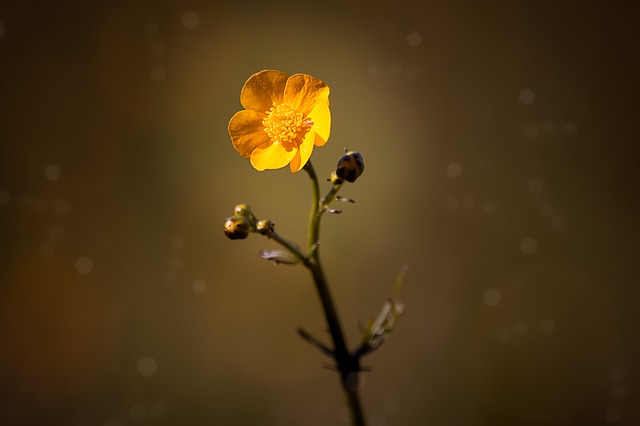 |  |  |   |  |
 |  |  |
Ranunculus acris L. - is a perennial plant, 20-70 cm tall. The stem is erect. Plant, especially leaves and stem, hairy with adherent hairs. Leaves alternate, radially divided or divided into 3-5 rhombic to linear and sessile tufts.
Often the stem of ( Ranunculus repens L.) is creeping, which takes root in the nodes of the stems. The plant is 10-50 cm tall with double-triparted leaves.
Flowers bisexual, regular, bright yellow, 1.5-2.5xm in diameter. The flower consists of 5 petals, with nectar buds.
Fruit naked nuts. Blooms in May and September.
The above-ground part of Spearwort , fresh and dried, is used for medicinal purposes. The roots of the plant are also used in folk medicine. The plant is harvested at the beginning of the flowering period (May-June). The plant is dried in a well-ventilated, shady place. As the plant dries, the poisonous substances collapse. The drug is stored in a paper container for up to 1 year. It is advisable to use gloves when collecting the plant, as long-term contact with the plant causes skin burns.
Both plants contain cardiac glycosides (raniculin) and alkaloids, which are especially abundant in the stems and leaves. In addition, flavonoids (kaempferol, quercetin), saponins, tannins, vitamin C, carotene are found in the fresh plant. Fruits contain vegetable fats, carotenoids in flowers (flavoxanthin, alpha-carotene-epoxide, chrysantemaxanthin, taraxanthin).
Medicinal significance
The pharmacological properties of Spearwort are related to their chemical composition. Spearwort has analgesic, tonic, wound-healing properties. In addition, it is used in folk medicine to accelerate the ripening and absorption of herbs (application). Can also be used as a local preventive agent in case of muscle and rheumatic pain.
Since ancient times, folk scientists and healers have been using Spearwort as decoctions and settings. It is, of course, impossible to use a fresh plant. However, with a very weak dilution of the juice, it is used to disinfect festering wounds, as well as to rub the body to kill the scabies mite.
In folk medicine, in order to open boils and boils, a paste of fresh Spearwort is placed on them.
Spearwort recommends soaking your feet before going to bed in case of rheumatism. Since ancient times, the caustic Spearwort juice has been ridding the skin of warts.
In folk medicine, a decoction of Spearwort , in small doses, is used to prevent liver, stomach, head and neuralgic pains, rheumatism, wounds, burns, abscesses, tuberculosis (especially bones), rabies, malaria and other ailments.
In addition, in folk medicine, Spearwort has proven itself well to treat non-healing wounds, skin irritations, burns, cuts and skin tears.
Spearwort is also used in lard ointments to treat sore joints and damaged areas of skin.
Preparations from Spearwort roots are also used in folk medicine. For example, the powder from the root is used to rid the skin of warts, it is used to make vaginal suppositories, used to treat infertility.
Spearwort seeds are used as a temperature-reducing and tonic agent in case of colds.
The bactericidal, wound-healing and analgesic properties of Spearwort have long been used in folk medicine to treat gout, rheumatism, radiculitis and arthritis. The plant is also effective in the treatment of skin diseases. Fungal diseases are successfully treated with Spearwort leaf mash in folk medicine.
Powdered Spearwort leaves and flowers were used in ancient times as equivalent to mustard plasters, and applied to boils and abscesses to speed up their ripening.
